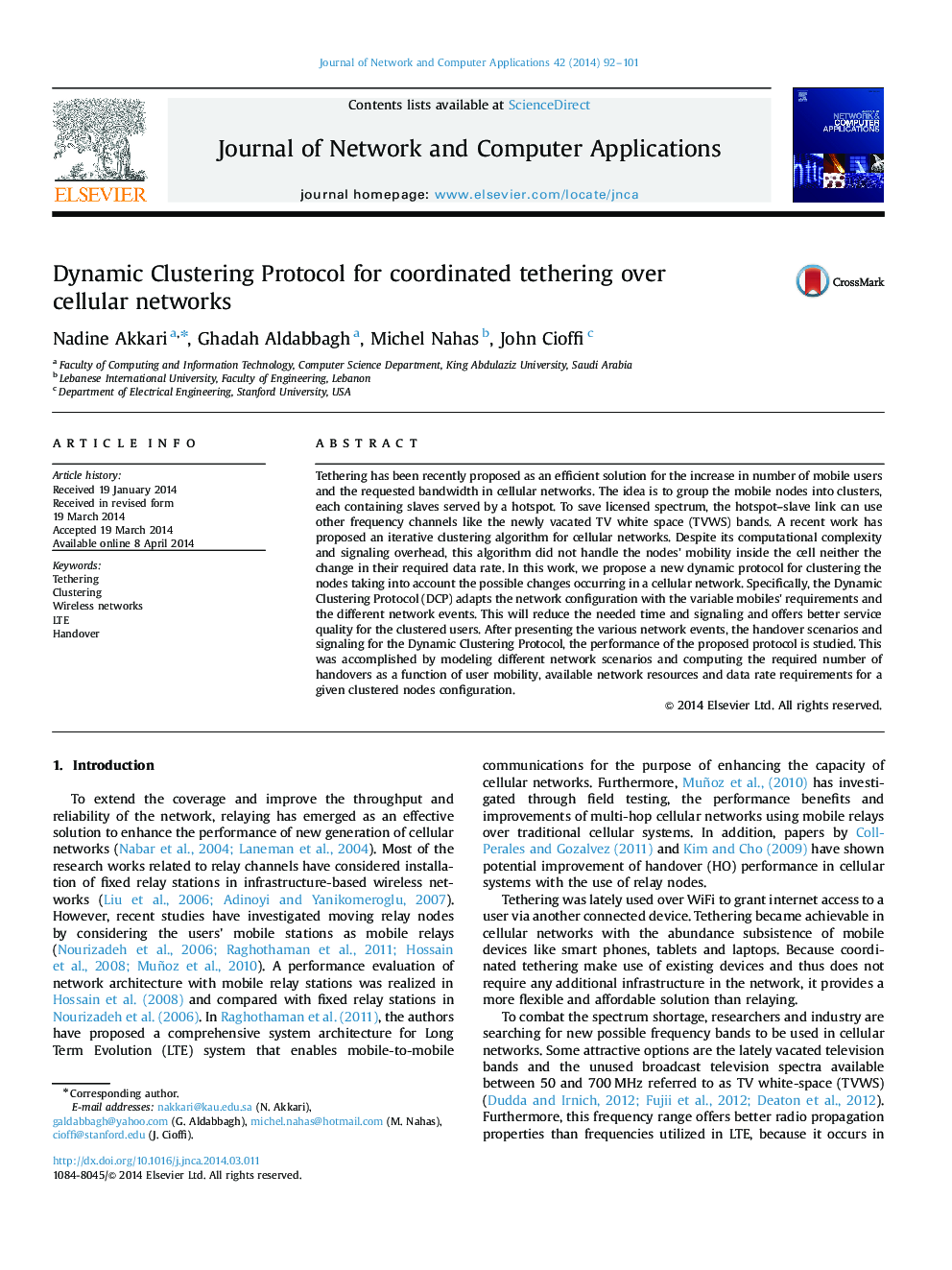| Article ID | Journal | Published Year | Pages | File Type |
|---|---|---|---|---|
| 6885092 | Journal of Network and Computer Applications | 2014 | 10 Pages |
Abstract
Tethering has been recently proposed as an efficient solution for the increase in number of mobile users and the requested bandwidth in cellular networks. The idea is to group the mobile nodes into clusters, each containing slaves served by a hotspot. To save licensed spectrum, the hotspot-slave link can use other frequency channels like the newly vacated TV white space (TVWS) bands. A recent work has proposed an iterative clustering algorithm for cellular networks. Despite its computational complexity and signaling overhead, this algorithm did not handle the nodes׳ mobility inside the cell neither the change in their required data rate. In this work, we propose a new dynamic protocol for clustering the nodes taking into account the possible changes occurring in a cellular network. Specifically, the Dynamic Clustering Protocol (DCP) adapts the network configuration with the variable mobiles׳ requirements and the different network events. This will reduce the needed time and signaling and offers better service quality for the clustered users. After presenting the various network events, the handover scenarios and signaling for the Dynamic Clustering Protocol, the performance of the proposed protocol is studied. This was accomplished by modeling different network scenarios and computing the required number of handovers as a function of user mobility, available network resources and data rate requirements for a given clustered nodes configuration.
Related Topics
Physical Sciences and Engineering
Computer Science
Computer Networks and Communications
Authors
Nadine Akkari, Ghadah Aldabbagh, Michel Nahas, John Cioffi,
